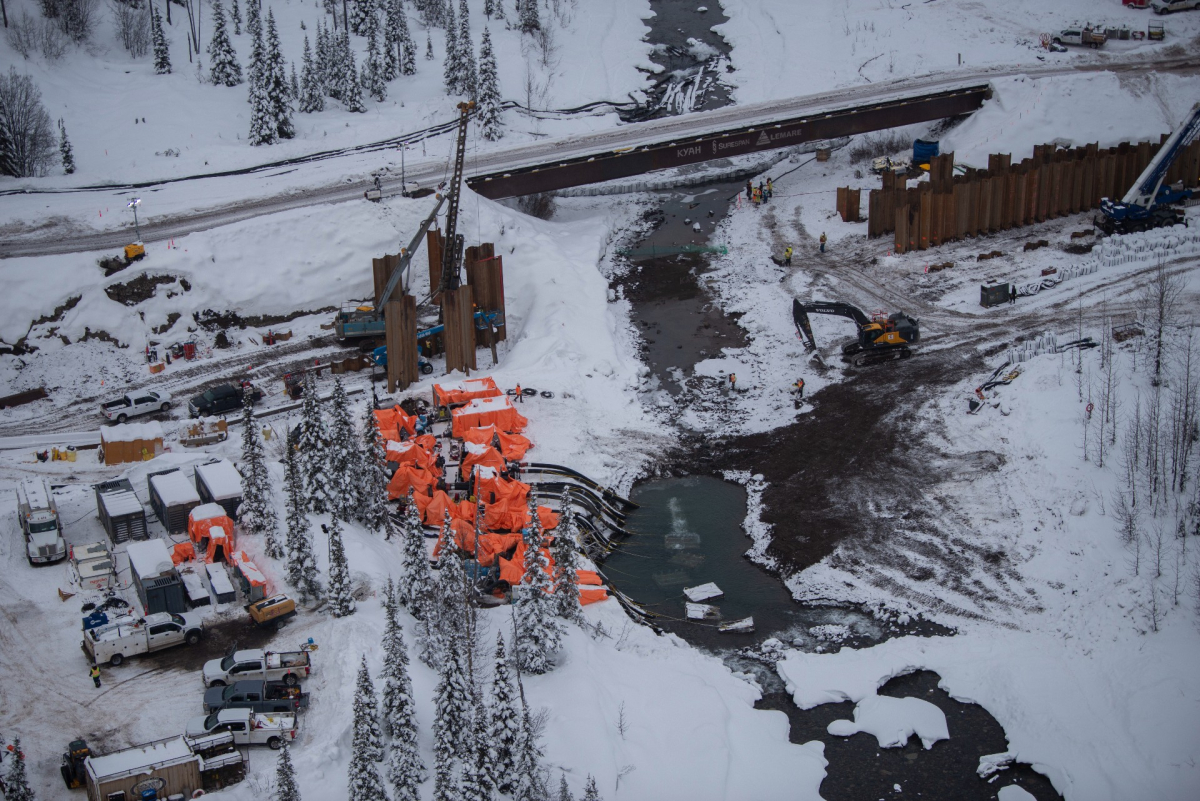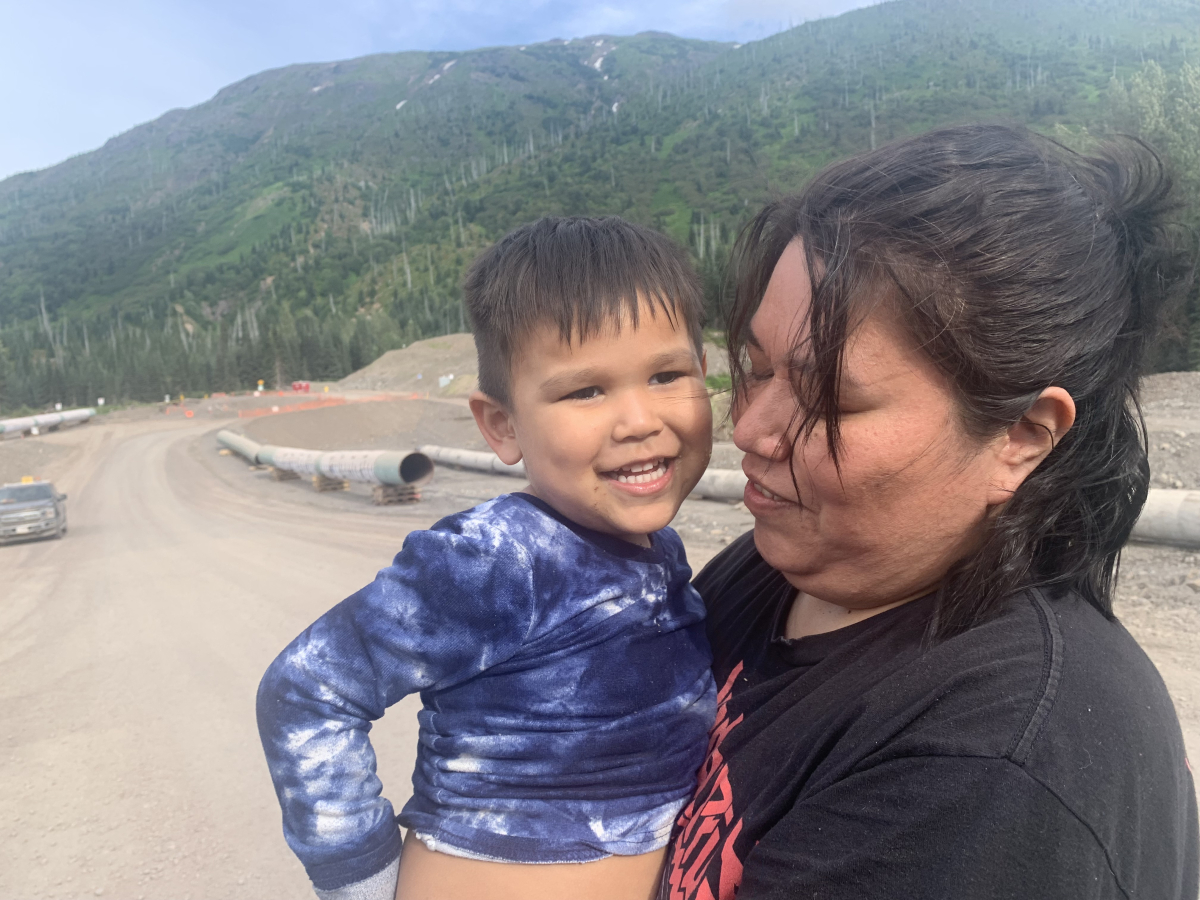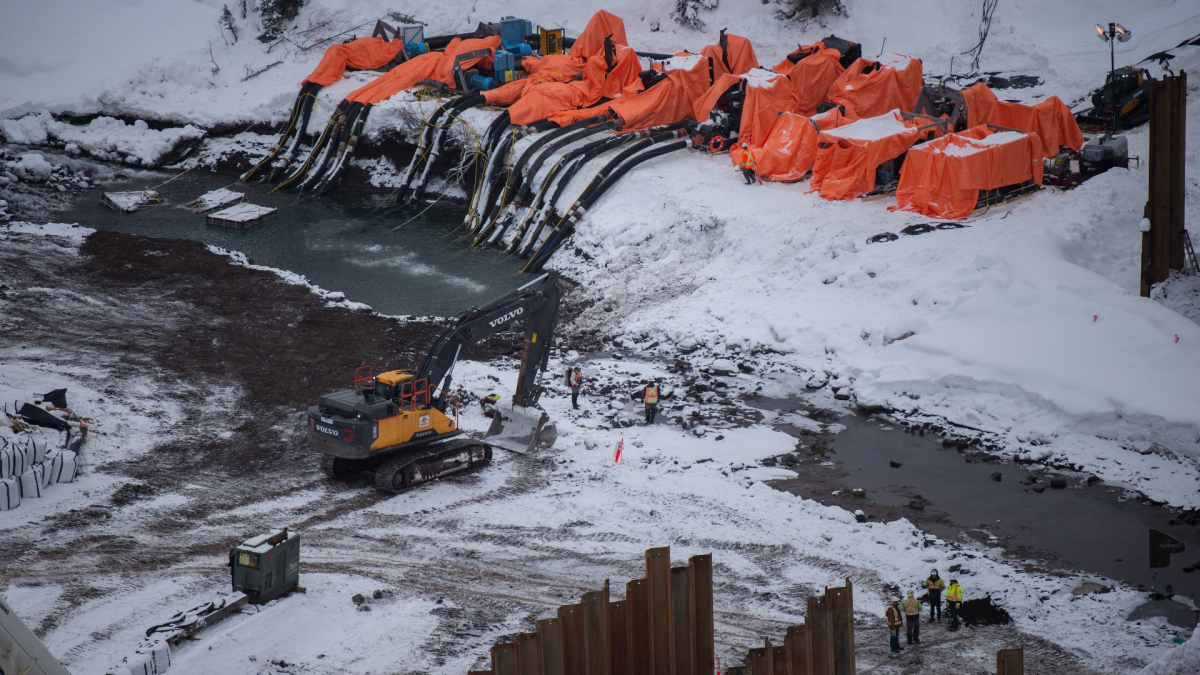Support strong Canadian climate journalism for 2025
The Department of Fisheries and Oceans is investigating a complaint that Coastal GasLink failed to prevent sediment stirred up by pipeline construction activities from flowing downstream at a construction site on the Lho Kwa (Clore River) in B.C.
Sediment pollution poses a serious risk to salmon and steelhead eggs, effectively smothering them. Clore River is a large tributary of the Skeena River, which is an important habitat for both salmon and steelhead trout.
“Skeena salmon and steelhead are facing many serious threats to their survival; digging up riverbeds without sediment and erosion control doesn’t help," Gary Michell, head ranger for Wet’suwet’en Fisheries, said in a statement.
The Coastal GasLink pipeline is being built by TC Energy and the company has a history of noncompliance when it comes to controlling sediment from worksites. Over the last two years, the project has garnered 37 warnings, 17 orders and two fines ($170,100 in May 2022 and $72,500 in February 2022) from B.C.’s Environmental Assessment Office (EAO). The EAO says they were primarily related to erosion and sediment control issues.
“Fishery officers from the (DFO’s) Conservation and Protection branch are currently looking into the complaint of sedimentation in the Clore River as a result of the work being performed on the (Coastal GasLink) pipeline project,” Dan Bate, manager of strategic communications at DFO, told Canada’s National Observer in an emailed statement on Jan. 12.
The 670-kilometre Coastal GasLink pipeline is expected to be completed by the end of 2023 and will transport natural gas from northeastern B.C. to the country’s first LNG processing and export facility in Kitimat, B.C. The project has been met with fierce and continued opposition from Wet’suwet’en hereditary leadership and just this week, Wet’suwet’en officials raised the alarm about disruptive instream work after surveying the Lho Kwa worksite by helicopter.
Photos taken from two helicopter flights on Jan. 8 and Jan. 10 show the riverbed was dug up to create an intake pool for large pumps to divert the river’s flow to allow instream work.
Tsebesa, a Likhts’amisyu clan chief, was on the Jan. 10 flight. As a hereditary clan chief, her job is to monitor her territory, which includes Clore crossing, where the construction is taking place.

Despite being “deathly terrified” of helicopter rides — she had vowed to never get into one after the father of one of her classmates was in a deadly crash — Tsebesa took to the air to see for herself.
She was “absolutely shocked” by what she saw.

“I was very alarmed to get out there and to see that. To see the big hole in the river, to see that there was no water flowing under the bridge to the other side,” Tsebesa told Canada’s National Observer in an interview.
The BC Oil and Gas Commission was notified of a complaint on Jan. 10 and followed up on it, according to a statement commission communications staff sent Canada’s National Observer the evening of Jan. 13. “Based on the imagery and information we've seen, [we] did not find any non-compliances,” it reads.
“Commission inspectors are planning to access the site by helicopter as soon as possible, weather depending,” and are working to get current imagery of the site, it said, noting the site’s remote location makes it difficult to access. The commission said it has carried out more than 400 inspections on the project and issued two orders, a dozen tickets, three warning letters and cited 49 deficiencies. “These include sediment and erosion control matters, construction-related concerns and failures to report. All matters have been appropriately dealt with,” it said.

Rather than answer questions about the company’s track record on sediment control, TC Energy directed Canada’s National Observer to a statement on its website.
“We have approved plans in place for safe work to mitigate potential impacts on people and the environment, especially when we work around bodies of water,” the statement reads. It goes on to say the work TC Energy is doing is fully authorized and permitted by regulators at all sites, including Clore River.
“We are committed to following all regulations and work with regulators to address any issues,” the statement reads.
It also noted that, on average, the project is inspected 12 times a month by regulators.
The EAO, BC Oil and Gas Commission and the Department of Fisheries and Oceans received a complaint on Jan. 8, 2023 that Coastal GasLink was crossing the Clore River without sediment control, the EAO confirmed in a statement to Canada’s National Observer. The crossing is allowed under a permit from the BC Oil and Gas Commission, which is the lead provincial regulator for the project’s water-crossing authorizations.
Over the past two months, the EAO said its compliance and enforcement officers “have been finding continued improvement” in Coastal GasLink’s mitigation measures for erosion and sediment control, “with CGL co-operatively responding to address any site-specific concerns.”
The Clore crossing area, where the construction is taking place, was considered “highly sacred” to the Likhts’amisyu clan because until recently, it has been untouched by industry, said Tsebesa.
When Tsebesa was given her hereditary name four years ago — and the land caretaking responsibilities that come with it — her aunt told her: “Nobody will ever touch it. You'll never have anything to worry about.”
In 2019, Coastal GasLink began construction.
“It's just … I can't even explain how beautiful it is up there,” said Tsebesa, referring to the Clore crossing area southwest of the town of Smithers. With the exception of the instream work, the man camp and road building, nature is still intact, said Tsebesa, reflecting on a visit to the area last October.
To Tsebesa, it is “impossible” to have a trusting relationship between her clan and the company.
“The reality is, even if we did trust them … it feels like our voices don't matter to them anyways, our opposition doesn't matter. Whether or not we agreed with the project, I don't even think that would matter,” she said. “The bottom line is this big company needs to … meet their bottom line. And it doesn't seem to matter who else … are stakeholders — whether it is the salmon, whether it's the land, whether it's certain people, whether it's the government, whether it's the taxpayers.”
Coastal GasLink’s statement expressed a commitment to protecting the environment, noting its importance to Indigenous and local community partners and British Columbians.

“We've got to figure out a way to make our voices heard, to make our concerns heard,” said Tsebesa. “We think of it like the land is something innocent, something that needs to be looked after because it's something that looks after us. Just like our kids. We look after our children ... knowing that when we get old, they'll be there to look after us.”
She questions how they can ensure the utmost respect for the land “with a company like this that completely disregards those things.”
Natasha Bulowski / Local Journalism Initiative / Canada’s National Observer







Comments